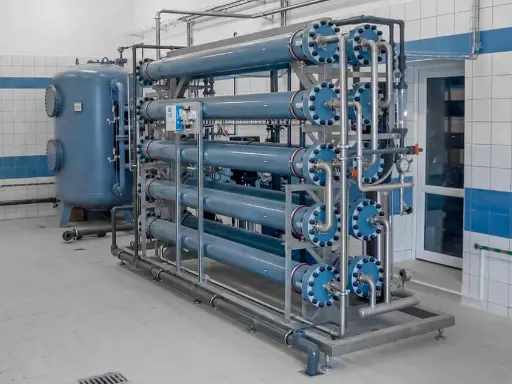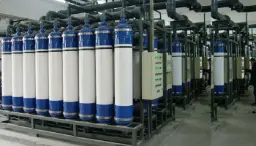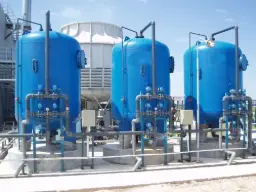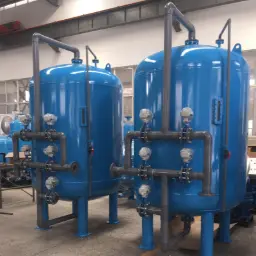Flotation Water Treatment
Flotation circuits have become the primary separation technology for many base-metal and precious-metal concentrators, yet the performance of each cell is inseparably tied to the quality of the water that carries the valuable minerals, reagents, and froth. In a typical mining and metallurgy plant, water enters the flotation area from the milling stage, from reagent make-up tanks, from concentrate thickeners, and increasingly from recycling loops that return tailings filtrate to the plant. Each of these streams carries fine particles, dissolved ions, residual collectors, and process oils that can change bubble coalescence rates, alter zeta potentials, and poison downstream reagents. When these contaminants are not controlled, recoveries drop, concentrate grades suffer, and specific reagent consumption rises. Operators therefore invest heavily in dedicated flotation water treatment trains that remove suspended solids, adjust hardness and alkalinity, strip excess organics, and disinfect biological growth that would otherwise foul the circuit. This treatment is not an afterthought, but a core enabling technology that keeps the metallurgical balance sheet in the black.
What, then, is flotation water treatment within the mining and metallurgy industry? It is the integrated set of physical, chemical, and sometimes biological unit operations that condition raw, recycled, or make-up water to meet the tight turbidity, chemistry, and microbiological specifications demanded by modern froth flotation. By removing ultrafine clays that adsorb collector, controlling calcium and magnesium that depress surface charge, and oxidising thiols that depress bubble formation, the treatment train ensures that air dispersion is predictable, reagents work at their designed dose, and froths remain stable enough to carry value minerals to launders without entraining gangue. In short, flotation water treatment is the invisible lever that makes liberation, collection, and separation economically feasible in today’s concentrators. Sustainability drivers, water-scarcity pressures, and corporate ESG commitments further elevate its importance because every cubic metre of water that can be recycled safely reduces freshwater intake, permitting costs, and environmental risk. That is why plant designers now discuss water in the same breath as milling energy and reagent schemes when sizing a new project.
Water Treatment Systems Used
Two busy paragraphs introduce, in detail, why mining companies rarely deploy a single technology in isolation for their flotation circuits. Instead, they assemble hybrid trains that blend clarifiers, filters, membrane skids, and oxidative polishing steps in order to hit multiple quality targets at once. The first paragraph notes that raw pit water usually contains suspended solids between 200 and 600 mg L⁻¹, a colour load that exceeds 350 Pt-Co units, and hardness over 1 000 mg L⁻¹ as CaCO₃, all of which interfere with xanthate adsorption and froth stability. The second paragraph explains how recycle streams exacerbate the problem by introducing thiosalts, surfactants, and residual flocculants, which can double frother demand if not removed. Together, these paragraphs set the stage for the carefully curated sequence of unit operations that follow.

Nanofiltration
NF membranes selectively strip divalent cations such as Ca²⁺ and Mg²⁺, lowering hardness to <50 mg L⁻¹ as CaCO₃ while passing most sodium needed for pH control.

Ultrafiltration
Operated in outside-in mode, this skid removes emulsified oils and colloids that escape gravity filtration, achieving an SDI <3 (15 min) to protect subsequent reverse-osmosis elements.

Multimedia Sand Filter
A deep-bed arrangement traps remaining fines down to 5 µm and polishes the clarifier overflow so that downstream membranes do not foul prematurely.

Lamella Clarifier
Inclined plates accelerate the settling of clays and metal hydroxide precipitates, reducing turbidity from >300 NTU to <50 NTU in less than 30 minutes of residence time.
These systems act in concert to deliver water that is clear, consistent, and chemically benign. Each unit removes a different class of foulant, and spacing them in the above order minimises energy use and chemical cost. The clarifier shoulders the heavy solids load, gravity filters give inexpensive particle polishing, ultrafiltration provides a physical barrier to emulsion breakthrough, nanofiltration adjusts ionic strength without over-softening, and AOP supplies the final oxidative insurance that keeps the circuit free of microbial surfactants. By combining these operations, plants routinely recycle 70 % to 90 % of flotation process water, cut lime consumption for pH control, and slash reagent overdosing, all while meeting strict discharge permits for the small bleed stream that leaves the loop.
Key Water-Quality Parameters Monitored
Maintaining tight control over water quality is not a passive exercise; it requires continuous online monitoring, rapid laboratory confirmation, and strong data analytics to correlate deviations with shifts in recovery or grade. Plants that once sampled once per shift now deploy multi-channel sensors that feed SCADA dashboards every minute. In the first paragraph here, we explain how turbidity remains the most intuitive metric because rising turbidity often precedes froth destabilisation, yet turbidity alone cannot predict scaling or reagent loss. Conductivity trends reveal recirculating ion build-up, while oxidation-reduction potential (ORP) provides a real-time indication of residual sulphide species that might depress valuable sulphide minerals. The same paragraph highlights that dissolved oxygen, although not a classical water-quality measure, affects micro-bubble nucleation in dissolved air flotation (DAF) pre-treatment units.
The second paragraph explores the importance of lesser-known parameters such as dissolved organic carbon (DOC), zeta potential, and calcium-to-sodium ratios. Variations in DOC can signal breakthrough of collector molecules, whereas shifts in zeta potential often foreshadow poor collector attachment or unexpected activation of gangue. Soft-sensor algorithms now estimate unmeasured variables, feeding into model-predictive control (MPC) loops that adjust lime, coagulant, and air-flow rates automatically. Finally, the paragraph notes growing regulatory pressure to monitor microplastics and trace metals in recycled water, pushing operators toward more sophisticated analytical suites and membrane-integrity tests.
| Parameter | Typical Range | Control Method |
|---|---|---|
| Turbidity | <5 NTU | Clarifier sludge-draw optimisation, polymer dosage trim |
| Hardness (as CaCO₃) | 10 – 50 mg L⁻¹ | NF pressure set-point, antiscalant feed |
| Conductivity | 400 – 1 000 µS cm⁻¹ | Bleed-and-blend ratio control |
| Oxidation-Reduction Potential | +150 – +250 mV | O₃ dose adjustment, H₂O₂ quench control |
| Dissolved Organic Carbon | <2 mg L⁻¹ | UV/AOP intensity modulation |
Design & Implementation Considerations
Designing a flotation water treatment train begins with a rigorous water balance that quantifies raw-water availability, recycle fractions, and bleed volumes under maximum, normal, and minimum throughput conditions. The first paragraph of this section discusses how site hydrology and climate influence peak suspended solids loads, forcing designers in arid climates to account for dust storms that spike turbidity, while wet-climate operations must handle large variations in temperature that affect flocculation kinetics. Pump sizing for recycle loops must consider not only hydraulic head but also shear sensitivity of polymeric flocculants that can degrade if impellers rotate too fast. Process engineers also confirm that tank materials, gaskets, and coatings resist the low-level sulphuric acid fog often present near crushing plants, preventing premature corrosion that would contaminate treated water with iron ions.
A second paragraph turns to digital engineering, noting that EPC firms increasingly build dynamic simulation models using tools like IDEAS or SysCAD to evaluate valve schedules, control-loop interactions, and upset recovery times. Membrane racks are laid out in 3D BIM platforms so that maintenance clearances, overhead crane paths, and chemical dosing skids are verified before breaking ground. Designers integrate IoT edge devices that transmit hourly permeate-flux data to cloud dashboards, where machine-learning models predict cleaning-in-place (CIP) triggers four to seven days in advance. Attention then shifts to energy optimisation: variable-speed drives on feed pumps track differential pressure across ultrafiltration bundles, while NF skids use permeate back-pressure valves to maximise recovery without exceeding 80 % of the membrane fouling factor. Sustainability goals require lifecycle carbon assessments, prompting selection of high-efficiency motors and solar-powered ozone generators when grid power is carbon intense.
Operation & Maintenance
Operating a flotation water treatment system demands continuous vigilance, because even small lapses propagate quickly through the circuit and erode metallurgical performance. The opening paragraph observes that most plants run the clarifier on a sludge-bed depth control loop tied to a sonar transducer; when deeper solids blankets are allowed to accumulate, they act as in-situ polymers and reduce chemical demand, yet operators must prevent bed carry-over into the weir. Automatic backwash cycles on dual-media filters are timed not only on head-loss but also on water-delivery schedules to ensure critical reagent make-up tanks never run dry. Operators trend permeate conductivity, SDI, and permeate-pressure differential to detect organic fouling before differential pressure spikes.
A second paragraph highlights maintenance philosophies that balance preventive, predictive, and opportunistic tasks. Ultrafiltration bundles undergo weekly air-scour pulses followed by chemically enhanced backwashes that alternate between alkaline surfactants and citric acid. NF elements receive quarterly low-pH CIP to solubilise gypsum nuclei, with membrane autopsy scheduled every two years. Ozone-generator electrodes are inspected semi-annually for calcium nitrate scaling, and UV lamps are replaced once irradiance falls below 70 % of the nameplate. Digital twin analytics generate advisories that appear in the CMMS, allowing planners to align membrane cleaning with scheduled plant maintenance shuts and thus minimise downtime. Operator training remains vital: shift personnel practice mock upset scenarios where raw-water turbidity exceeds design values, honing their responses in the virtual control room before identical conditions strike the real plant.
Challenges & Solutions
Flotation water treatment is not without obstacles. The first of two paragraphs elaborates on climate resilience, where drought forces plants to recycle almost every litre, concentrating sulphate and chloride beyond design levels and risking membrane scaling. Meanwhile, sudden storm events can overwhelm clarifiers and cause a spike in clay carry-over that consumes collector and clogs launders. Biological fouling remains a stealthy threat in warm climates, as biofilms on pipe walls release polysaccharides that destabilise froth. Regulatory scrutiny over cyanide-bearing tailings water drives tighter effluent discharge limits, requiring versatile treatment chains that can destroy thiocyanate yet avoid generating toxic chlorinated by-products.
The second paragraph explains how plants meet these challenges with modular equipment, robust automation, and advanced chemistries. Designers add parallel lamella packs that can be isolated during cleaning, allowing uninterrupted service. Membrane packages are installed on skid runners so whole racks can be swapped out during catastrophic fouling, letting operators clean offline. Blended coagulants combining aluminium-chlorohydrate and modified starch reduce sludge volume and cut lime use by 30 %. Real-time spectroscopic probes detect collector breakthrough minutes after it occurs, allowing immediate adjustments to peroxide feed. Finally, remote support centres monitor dozens of mines globally, pushing over-the-air control-loop tuning updates that stabilise operations without costly fly-in engineers.
Advantages & Disadvantages
Evaluating any treatment strategy requires a balanced view that weighs metallurgical benefits against capital and operating burdens. In the first paragraph, we emphasise that the principal advantage of a well-designed flotation water treatment train is improved recovery: mines commonly report one to two percentage-point gains in copper or lead recovery upon commissioning, translating to millions of dollars annually. Reagent optimisation follows because clean water reduces frother and collector demand, extending reagent supply intervals and lowering logistics costs in remote sites. Energy savings accrue when NF permeate requires less lime for pH control, and sustainability metrics improve because freshwater abstraction falls drastically. Conversely, these gains come with significant capital outlay for membranes, ozone systems, and automation hardware, and they impose additional complexity on plant maintenance.
The second paragraph underscores that membrane fouling and chemical cleaning cycles can erode availability if not managed. High-pressure pumps elevate electrical demand unless variable-frequency drives and energy-recovery devices are fitted. Operators must store oxidants like hydrogen peroxide, posing safety compliance requirements. Moreover, sludge from clarifiers and spent cleaning solutions must be disposed of responsibly, adding to the environmental footprint. Finally, rapid advances in membrane and sensor technology can render newly installed equipment obsolete sooner than traditional mechanical assets, challenging depreciation schedules and upgrade planning.
| Aspect | Advantage | Disadvantage |
|---|---|---|
| Metallurgical Recovery | 1-2 % increase in valuable metal yield | Requires stable operations to realise gains |
| Reagent Consumption | Up to 25 % reduction in collector and frother use | Over-dosing risk if water quality fluctuates |
| Water Conservation | 70-90 % recycling rate, less freshwater intake | Concentrated brine disposal needed |
| Energy Efficiency | Lower lime grinding and dosing energy | Pumping energy for membranes rises |
| ESG Compliance | Meets tighter discharge limits, enhances social licence | Capital cost increases payback period |
Frequently Asked Questions
Plenty of misconceptions surround flotation water treatment, and a thoughtful FAQ section helps engineers and plant managers make informed decisions. The first paragraph introduces the intent: to clarify practical issues such as membrane life expectancy, adaptability to ore changes, and integration with existing control systems. It also highlights that many decision-makers still assume conventional settling alone is sufficient, overlooking the synergistic benefits of paired processes like NF and AOP. The paragraph explains that all answers draw on field data from copper, nickel, and rare-earth mines worldwide, ensuring relevance across ore types. The second paragraph encourages readers to treat the FAQ as a living document that should evolve with each plant trial, reagent shift, or regulatory update. It reminds operators that while each mine is unique, the underlying principles of removing particles, adjusting chemistry, and oxidising organics remain universal. Finally, the paragraph notes that embracing digital twins and remote monitoring dramatically shortens the learning curve, allowing even greenfield sites to leapfrog older installations in performance.
Q1: How often must NF membranes be replaced in a flotation water circuit?
A1: With proper pretreatment and quarterly CIPs, nanofiltration elements typically last five to seven years before permeate flow declines below 80 % of design.
Q2: Can treated flotation water be reused in the milling stage without harming grinding efficiency?
A2: Yes; polishing via UF and NF removes most organics and hardness, preventing abnormal rheology in slurry mills, although trace surfactant monitoring is advised.
Q3: Does ozone affect flotation reagent chemistry downstream?
A3: Residual ozone decays rapidly in the circuit and is usually quenched by peroxide or organics, so interference with xanthate collectors is negligible when ORP is properly controlled.
Q4: What is the typical payback period for a full flotation water treatment plant?
A4: Payback ranges from 18 to 36 months depending on metal prices, water scarcity penalties, and reagent cost savings realised after commissioning.
Q5: How is sludge from clarifiers managed at remote mine sites?
A5: Operators thicken the sludge to 55 % solids, blend it into tailings paste, or stabilise it with cement for use as structural backfill in underground stopes.
Q6: Will increasing recycling create scaling problems in tailings pipelines?
A6: Elevated sulphate and hardness can raise scaling risk, but controlled bleed-and-blend plus antiscalant dosing maintain ionic strength below saturation limits.
Q7: Are biological treatments like MBBR viable in cold-climate mines?
A7: Moving-bed biofilm reactors work down to 4 °C if nutrient balance and carrier retention time are optimised, though winterising tanks is essential.